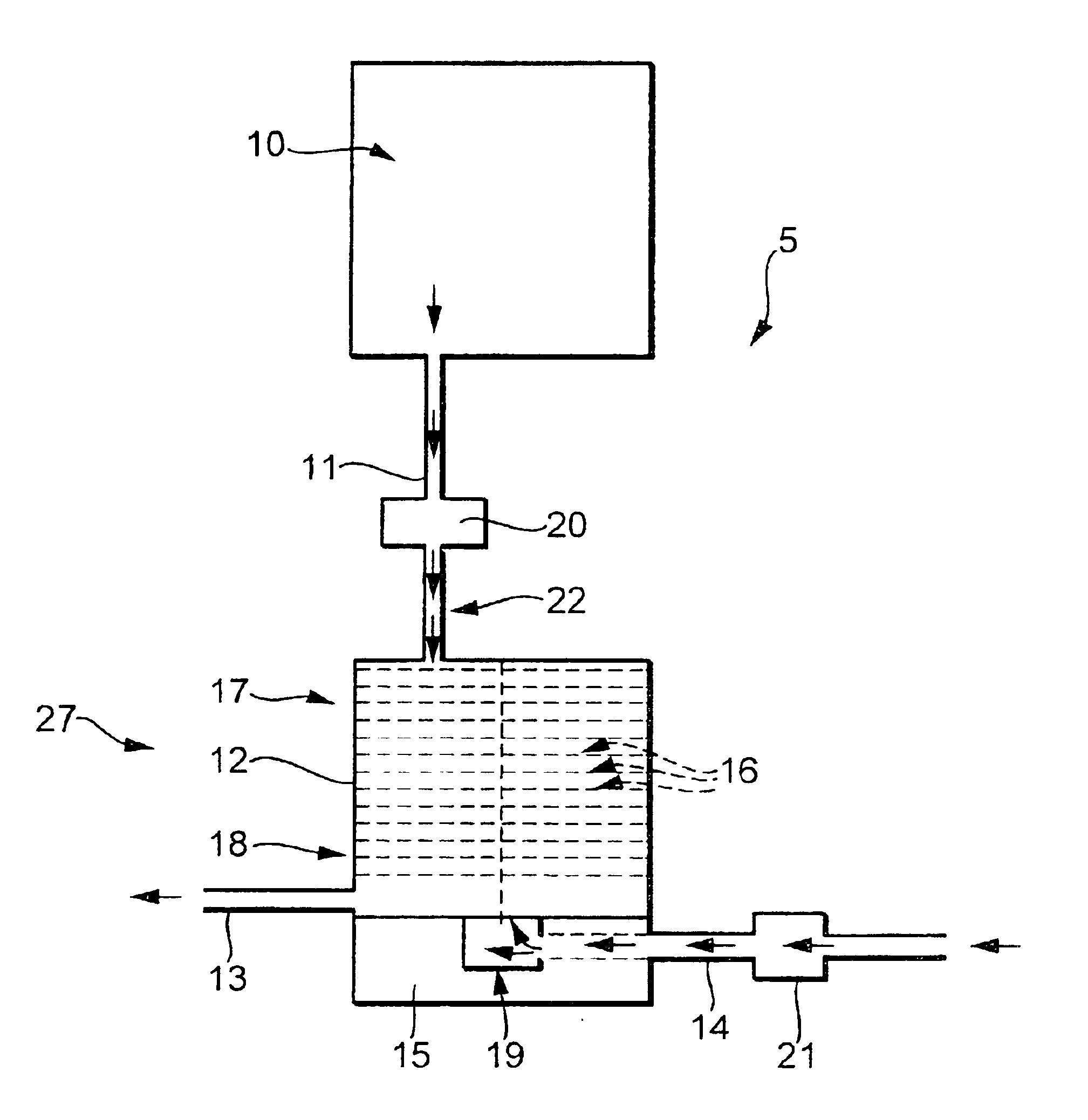Method of avoiding or eliminating deposits in the exhaust area of a vacuum system
a vacuum system and vacuum component technology, applied in the direction of final product manufacturing, hollow article cleaning, chemistry apparatus and processes, etc., can solve the problems of not being able to suppress any other than sulfur deposits in the exhaust gas, not being able to avoid unwanted polymer deposits, and certain amount of harmful polymer deposits and/or sulfur deposits in the vacuum components of the etching system
- Summary
- Abstract
- Description
- Claims
- Application Information
AI Technical Summary
Benefits of technology
Problems solved by technology
Method used
Image
Examples
Embodiment Construction
The illustrated exemplary embodiment is initially based on a method of anisotropic etching of silicon, as is known from German Patent No. 42 41 045. In particular, an anisotropic plasma etching process of a structure defined by an etching mask, in particular precisely defined lateral recesses, is carried out in silicon within a vacuum chamber 10, the anisotropic etching process being carried out in separate, alternating consecutive etching steps and polymerization steps that are controlled independently of each other. In particular, a polymer is applied to a lateral limit of the structure defined by the etching mask during the polymerization steps and then removed again during the subsequent etching step.
Fluorohydrocarbons preferably having a low fluorine to carbon ratio, for example C4F8, C3F6 or CHF3, which are mixable with argon, are further supplied to vacuum chamber 10 during the polymerization steps. Sulfur hexafluoride, which is also mixable with argon, is used during the etc...
PUM
| Property | Measurement | Unit |
|---|---|---|
| operating temperature | aaaaa | aaaaa |
| operating temperature | aaaaa | aaaaa |
| pressures | aaaaa | aaaaa |
Abstract
Description
Claims
Application Information
 Login to View More
Login to View More - R&D
- Intellectual Property
- Life Sciences
- Materials
- Tech Scout
- Unparalleled Data Quality
- Higher Quality Content
- 60% Fewer Hallucinations
Browse by: Latest US Patents, China's latest patents, Technical Efficacy Thesaurus, Application Domain, Technology Topic, Popular Technical Reports.
© 2025 PatSnap. All rights reserved.Legal|Privacy policy|Modern Slavery Act Transparency Statement|Sitemap|About US| Contact US: help@patsnap.com



